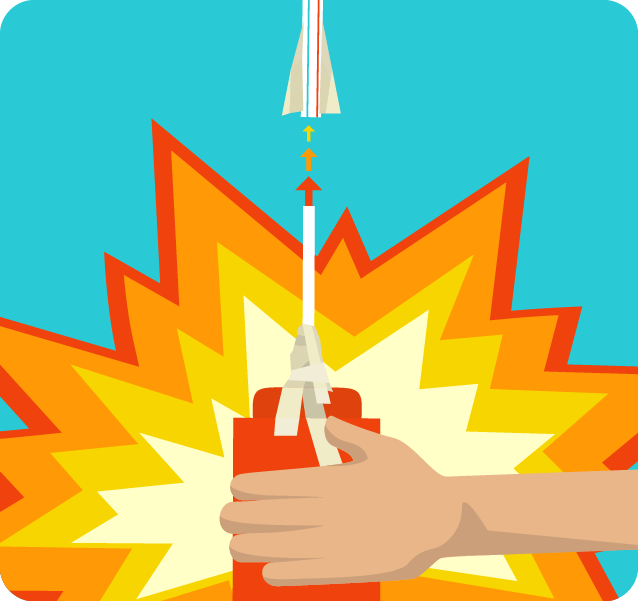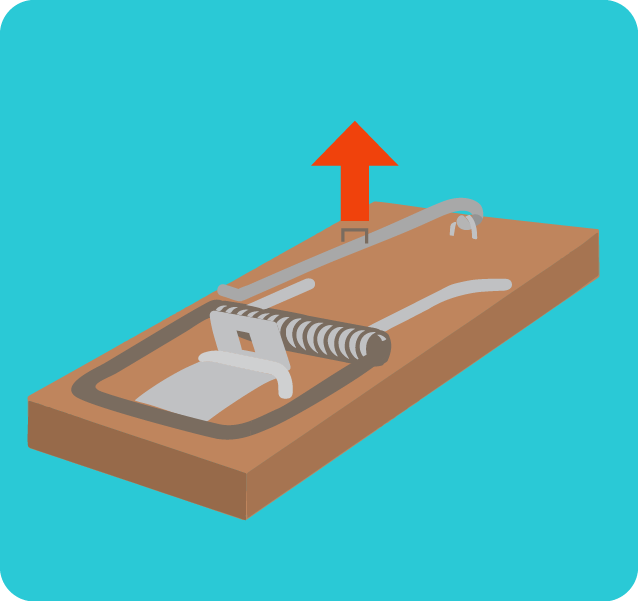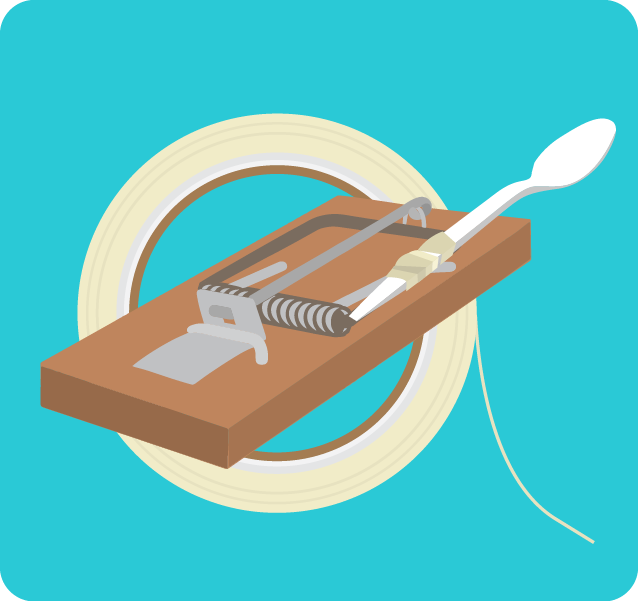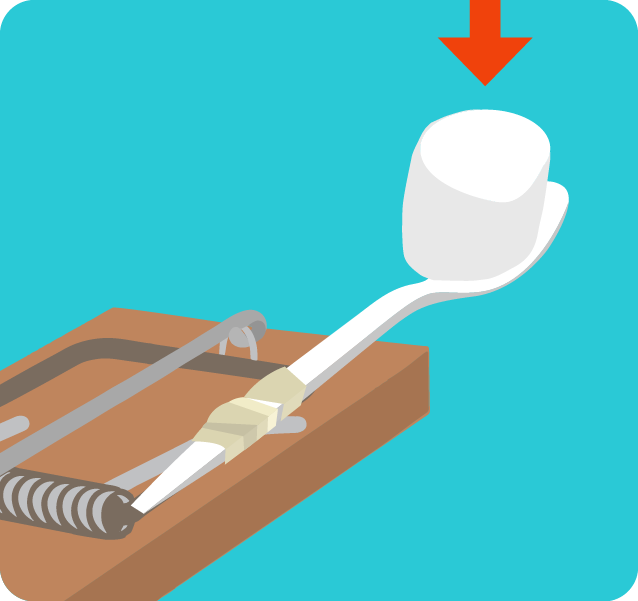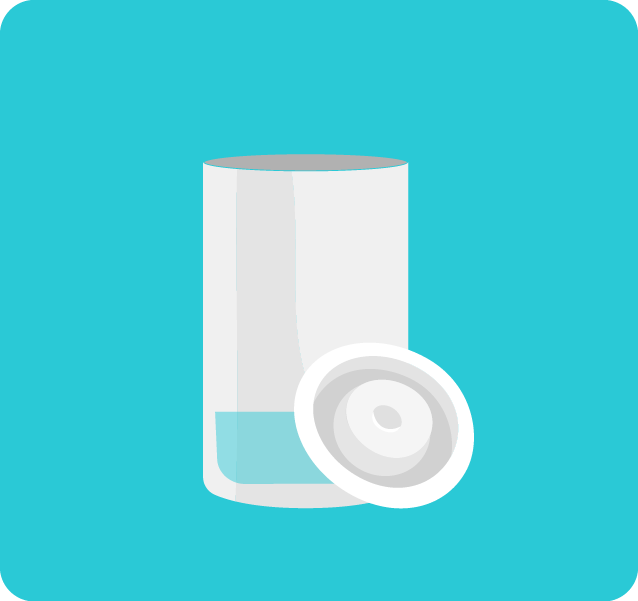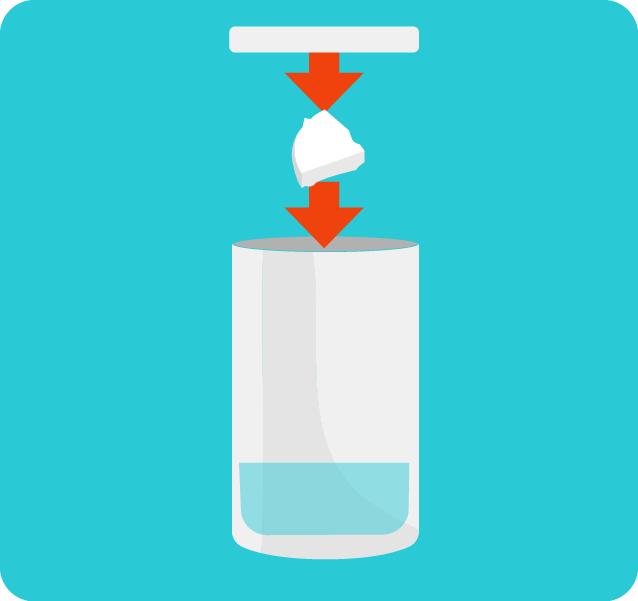If we knew what we were doing,
it wouldn’t be called research.
- Albert Einstein
Here are a few science experiments you can try at home...
Super Short Straw Rocket
Materials
Plastic drinking straw
Scissors
Masking tape
Cylindrical Ketchup Bottle (with cone top)
Procedure
Cut a Large Soda Straw in half. Take small strips of tape and tape over ONE end of the straw
Close to the other end of the straw you can cut out fins or make fins out of strips of tape
Take a SMALL straw and cut it in half
Split the bottom of the straw on two sides (two 1/4 inch slits up the straw works best)
Cut the very tip of the Ketchup Bottle off to allow more air to flow
Pull the smaller straw on top of the cone and tape it to the cone and the bottle to where it is secure and standing straight up.
Slide your Larger straw rocket over the top of the smaller straw on the bottle.
Give the bottle a quick squeeze or slam one hand into the side of it.
The Straw Rocket will launch into the air!
Variables: What if you changed the following...
More or less weight on the top of the rocket
The size or number of fins
The length of the Straw Rocket or Straw Launcher
Observations: What did you see?
What makes it go higher, force or speed on the bottle?
What makes it fly straighter, more or less fins? No fins?
How much is too much? How much is too little?
Mouse Trap Catapult
Note: Mousetraps can be a little dangerous! If one snaps back on your hand it could hurt your finger.This project requires adult supervision.
Materials
Wooden snap-back mousetrap
Duct tape or masking tape
Plastic spoon
Marshmallow (or ping-pong ball)
Procedure
Take the staple out of the straight setting arm.
Set the trap by pulling the snapper arm back and pulling the setting arm over the snapper and placing the hook just under the bait platform.
While holding the snapper arm down, tape the spoon to one side of the snapper hoop or the other.
DO NOT tape the spoon in the middle, it should be on one side or the other in order to set the trap.
The spoon should be secured to the snapper arm in such a way that it hold water when the trap is set.
Set the trap and gently place a marshmallow in the spoon.
Using a pencil or straw, tap the bait platform to engage the snapper arm and spoon.
What’s Happening?
Newton’s first law of motion states that objects in motion tend to remain in motion, unless acted on by an outside force. When you released the catapult, both the lever arm and the “ammunition” moved forward with energy from the spring. When the lever arm hit the other side of the trap, it came to a sudden stop. The marshmallow, however, remained in motion until it hit something else or until the force of gravity overcame its motion and brought it to the ground.
Observations: What did you see?
Variables: What if you changed the following...
Does a long spoon or short spoon throw further?
Does a larger or smaller spoon make a different?
Which one throws further, a positive or negative angle?
Does it make a difference if the trap is secured?
The length of the spoon (shorter or longer)
The size of the spoon, bowl, or tape around the spoon
The angle of the mousetrap
Free trap or secured to the surface
Film Canister Rocket
Materials
One 35mm plastic film canister and lid.
White canisters (Fuji canisters) tend to work the best.
One effervescent tablet (such as Alka-Seltzer, or other pain reliever)
Water
One 3-5 ounce cup (Dixie cup or small drinking cup)
Procedure
Remove the lid from the film canister and put a about a half inch of water into the canister.
Break the antacid tablet into quarters, you only need 1/4 of the tablet.
GET READY TO DO THIS AS QUICKLY AS POSSIBLE: Drop the tablet piece into the canister and snap the cap onto the canister (make sure that it snaps on tightly.)
Put the canister UPSIDE DOWN into the cup.
STAND BACK! DO NOT look into the cup or put anything over it
About 10 seconds later, you will hear a POP! and the film canister will launch into the air!
If it does not launch, wait 20-30 seconds before removing the canister from the cup. It either is leaking or the pressure is still in the canister. With the canister away from you, slowly push the lid up and off of the canister. It may pop, so do not be surprised, (or scream like a little girl! Unless of course, you are a little girl, then it is quite alright).
Explanation
When the tablet dissolves in water, a chemical change takes place and a gas is formed. Most seltzer tablets contain a base called sodium bicarbonate (baking soda) and dehydrated citric acid. When the tablet is place in contact with the water, the citric acid combines with the baking soda. Acids and bases undergo a chemical reaction when they mix, producing a gas and salt. This gas is carbon dioxide. As the carbon dioxide is being released, it creates pressure inside the film canister. The more gas that is made, the more pressure builds up until the cap it blasted down and the rocket is blasted up. In the closed container, the newly created gas has no place to go since the closed container is already full of air. The carbon dioxide rushes out, making a sound. This same kind of thrust is how a big rocket works in outer space or here on earth.
Variables: What if you changed the following...
The amount of water
The amount of tablet
The temperature of the water
Observations: What did you see?
How much water/tablet makes it go the highest?
How much water/tablet makes it go the quickest?
How much is too much? How much is too little?










